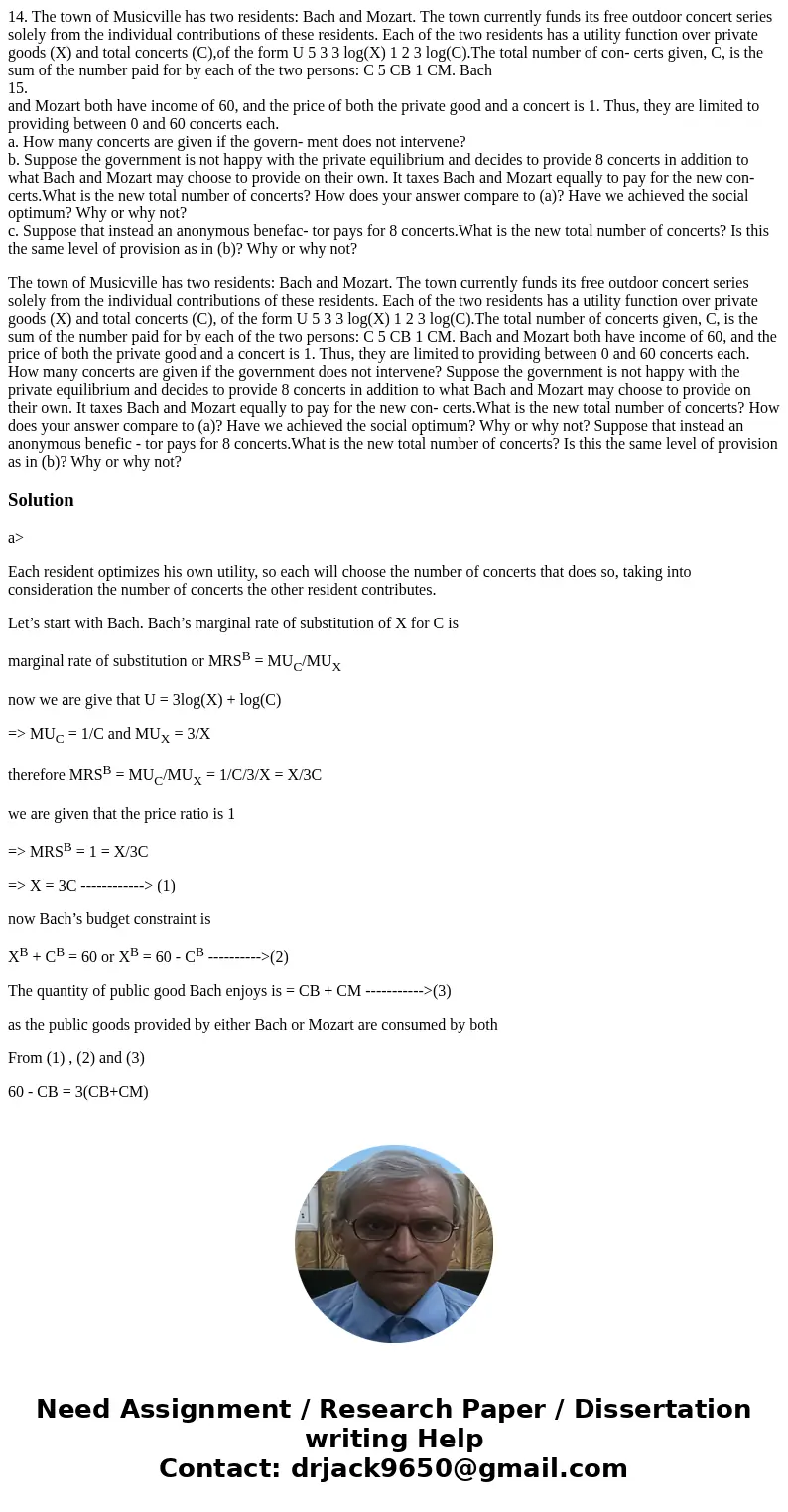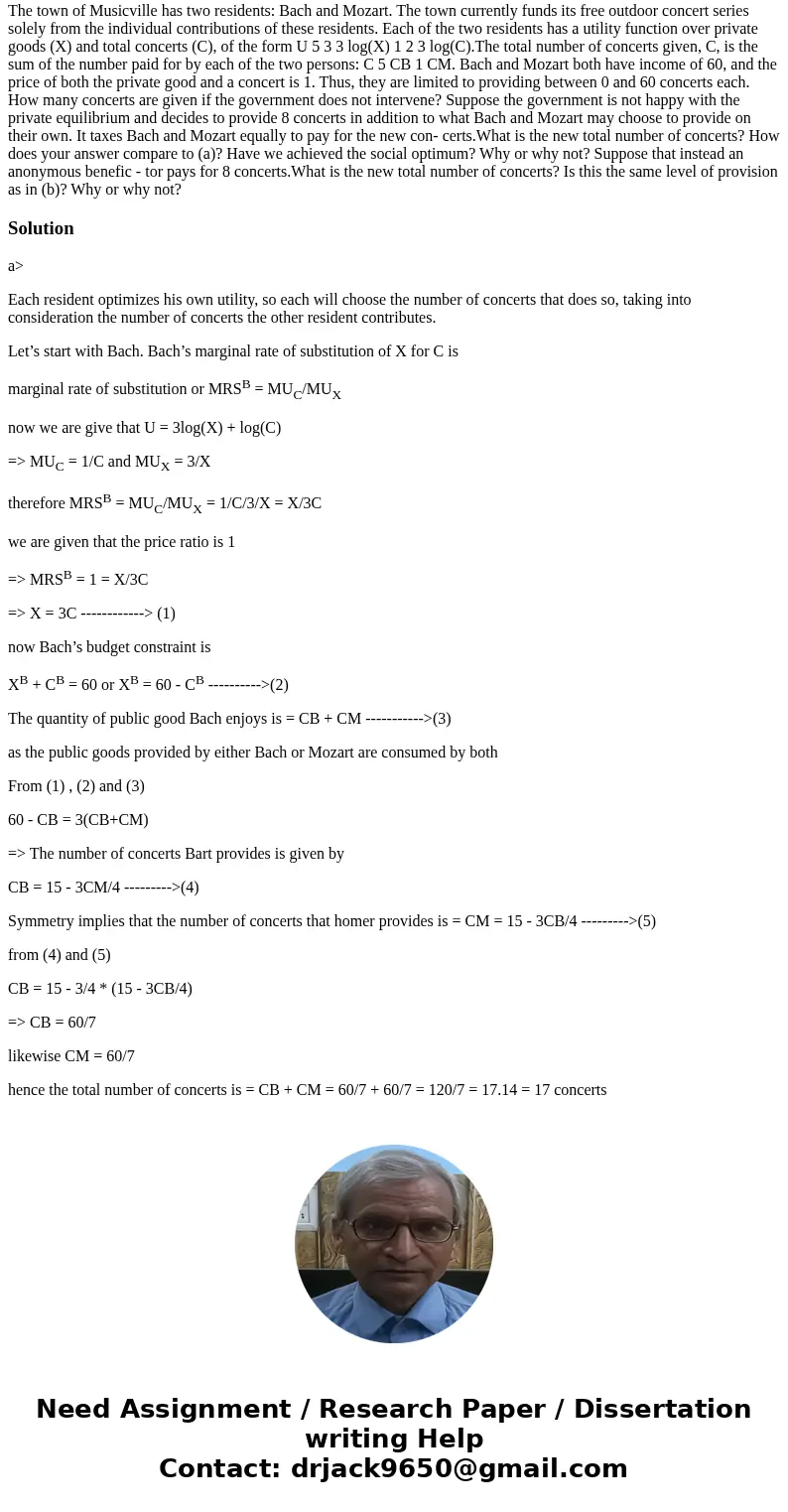14 The town of Musicville has two residents Bach and Mozart
14. The town of Musicville has two residents: Bach and Mozart. The town currently funds its free outdoor concert series solely from the individual contributions of these residents. Each of the two residents has a utility function over private goods (X) and total concerts (C),of the form U 5 3 3 log(X) 1 2 3 log(C).The total number of con- certs given, C, is the sum of the number paid for by each of the two persons: C 5 CB 1 CM. Bach
15.
and Mozart both have income of 60, and the price of both the private good and a concert is 1. Thus, they are limited to providing between 0 and 60 concerts each.
a. How many concerts are given if the govern- ment does not intervene?
b. Suppose the government is not happy with the private equilibrium and decides to provide 8 concerts in addition to what Bach and Mozart may choose to provide on their own. It taxes Bach and Mozart equally to pay for the new con- certs.What is the new total number of concerts? How does your answer compare to (a)? Have we achieved the social optimum? Why or why not?
c. Suppose that instead an anonymous benefac- tor pays for 8 concerts.What is the new total number of concerts? Is this the same level of provision as in (b)? Why or why not?
Solution
a>
Each resident optimizes his own utility, so each will choose the number of concerts that does so, taking into consideration the number of concerts the other resident contributes.
Let’s start with Bach. Bach’s marginal rate of substitution of X for C is
marginal rate of substitution or MRSB = MUC/MUX
now we are give that U = 3log(X) + log(C)
=> MUC = 1/C and MUX = 3/X
therefore MRSB = MUC/MUX = 1/C/3/X = X/3C
we are given that the price ratio is 1
=> MRSB = 1 = X/3C
=> X = 3C ------------> (1)
now Bach’s budget constraint is
XB + CB = 60 or XB = 60 - CB ---------->(2)
The quantity of public good Bach enjoys is = CB + CM ----------->(3)
as the public goods provided by either Bach or Mozart are consumed by both
From (1) , (2) and (3)
60 - CB = 3(CB+CM)
=> The number of concerts Bart provides is given by
CB = 15 - 3CM/4 --------->(4)
Symmetry implies that the number of concerts that homer provides is = CM = 15 - 3CB/4 --------->(5)
from (4) and (5)
CB = 15 - 3/4 * (15 - 3CB/4)
=> CB = 60/7
likewise CM = 60/7
hence the total number of concerts is = CB + CM = 60/7 + 60/7 = 120/7 = 17.14 = 17 concerts


 Homework Sourse
Homework Sourse